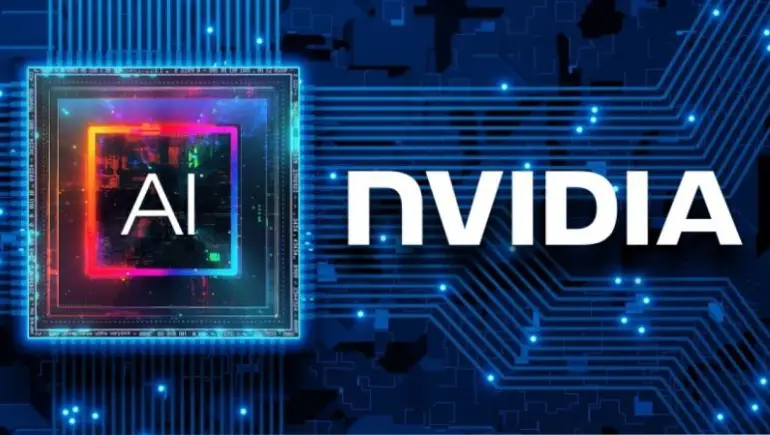
Nvidia, the global leader in AI computing and graphics processing, has just announced a cutting-edge chip-linking technology that could transform the AI industry. Designed specifically to support custom AI workloads, this new interconnect technology enables seamless integration between multiple AI chips, offering unprecedented scalability, power efficiency, and flexibility for enterprises and research labs alike.
This breakthrough marks a pivotal moment in the evolution of AI hardware. It allows developers to design bespoke AI systems tailored to specific industry needs, from healthcare and autonomous driving to generative AI and large language models.
Nvidia’s new chip-linking innovation is engineered to connect multiple AI chips into a single, high-performance unit. Unlike traditional GPU scaling methods, which are often hindered by data transfer bottlenecks, this solution utilizes ultra-high-speed interconnects and a shared memory architecture to maintain low latency and high throughput across all connected chips.
The architecture is modular, making it possible to create custom configurations based on the unique requirements of each AI workload. It provides high bandwidth and low latency communication between chips, which is essential for managing the massive volumes of data required to train advanced AI models. The system is also energy-efficient, optimized to reduce power consumption even in complex, multi-chip environments. Importantly, this new technology is designed to integrate seamlessly with Nvidia’s current platforms, including the powerful H100 GPUs and the forthcoming Blackwell architecture.
Custom AI is increasingly seen as the future of artificial intelligence. Unlike general-purpose models, custom AI solutions are tailored to the specific needs of individual industries and applications. Nvidia’s chip-linking technology enables the development of highly optimized AI infrastructures, making it significantly easier for companies and developers to build systems that match the unique demands of their use cases.
This is particularly important in sectors such as medical imaging, autonomous vehicle perception, smart factories with edge AI deployments, and large-scale generative AI systems. With this innovation, developers are no longer restricted to standard, one-size-fits-all GPU setups. Instead, they can construct domain-specific AI accelerators that deliver higher efficiency and performance.
With this new chip-linking capability, Nvidia is positioning itself not just as a hardware manufacturer, but as a key platform enabler for next-generation AI solutions. As organizations race to build and train larger models such as GPT, Gemini, and Claude, this technology provides a much-needed foundation for custom hardware accelerators that combine agility with raw power.
This advancement also strengthens Nvidia’s dominance in the data center and AI infrastructure space. It aligns perfectly with the rise of AI-as-a-Service (AIaaS) and the growing demand for highly scalable AI cloud environments. By offering this level of customization and integration, Nvidia ensures that it remains central to the most ambitious AI projects underway today.
The announcement has already generated significant interest among hyperscalers, cloud providers, and AI-driven enterprises. Industry analysts suggest that this technology could accelerate the adoption of AI supercomputing platforms and encourage a wave of new investment in AI research and development.
In the words of Nvidia CEO Jensen Huang, “The future of AI is highly customized and domain-specific. Our new chip-linking technology is a cornerstone in building that future, offering unmatched scalability and flexibility.” This vision underscores the growing need for specialized solutions in a landscape where AI models are becoming more complex and resource-intensive than ever before.
Nvidia’s new chip-linking technology represents more than just a technical upgrade—it is a major leap forward in the architecture of AI systems. By removing traditional bottlenecks and enabling modular, custom configurations, this innovation makes it easier than ever to build intelligent systems that are powerful, efficient, and tailored to specific needs. As artificial intelligence continues to evolve and scale across industries, this technology is set to play a foundational role in the infrastructure that supports it. Whether it’s training large language models, processing real-time data on the edge, or powering next-gen robotics, Nvidia’s latest innovation promises to redefine what's possible in custom AI development.
-112x63.27.webp)




-132x74.57.webp)






Comments
There are no comments for this Article.